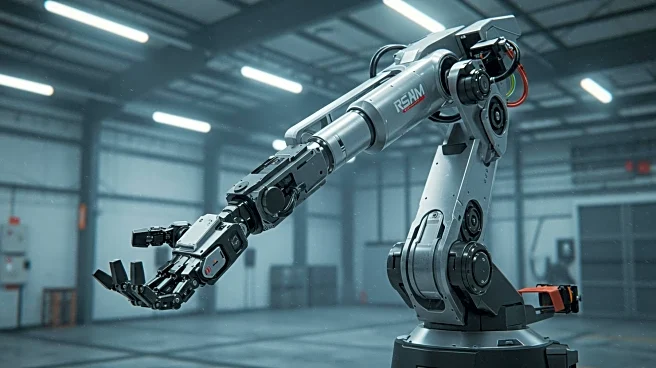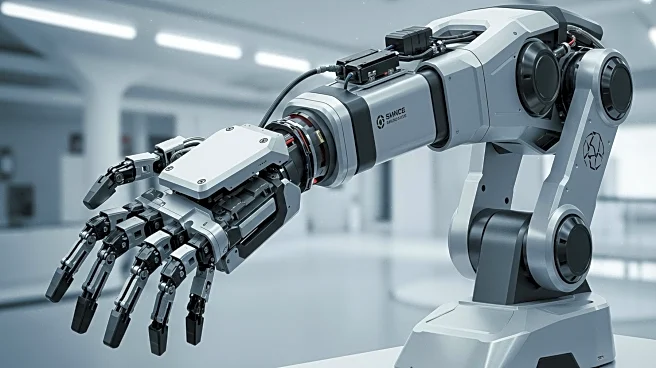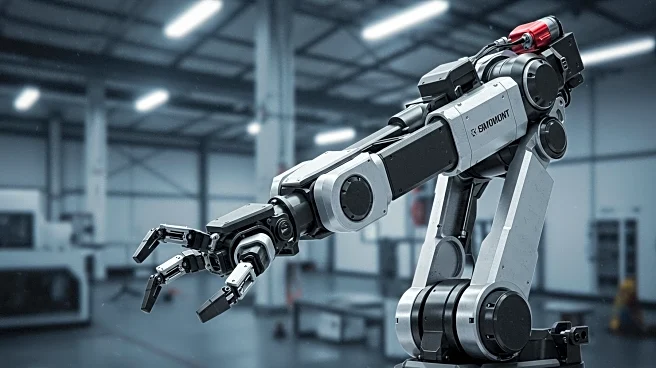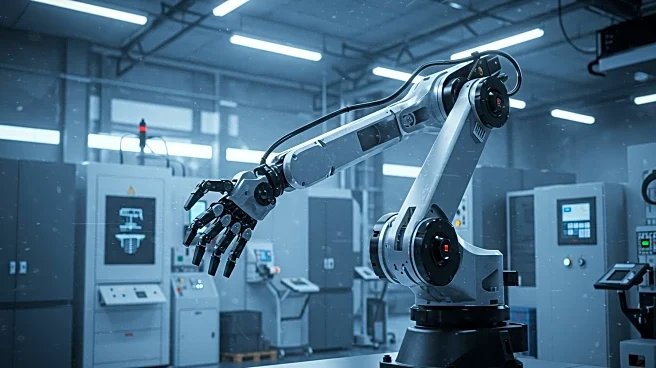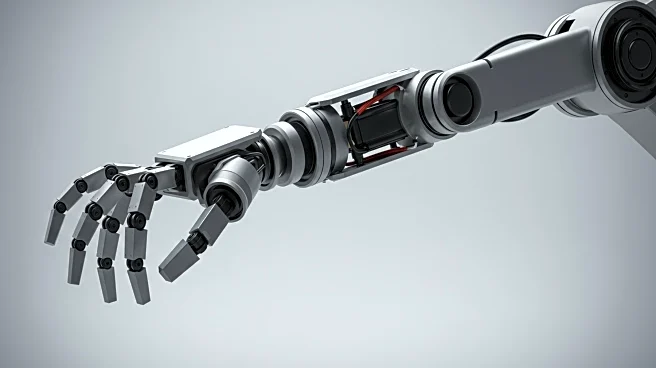Rapid Read • 7 min read
The Association for Advancing Automation (A3) reports modest growth in North American robot sales for the first half of 2025. Robot orders increased by 4.3%, with revenue rising 7.5% compared to the same period in 2024. Collaborative robots (cobots) are gaining traction, accounting for a significant share of the market. The automotive sector led the gains, but non-automotive industries like life sciences and electronics are increasingly adopting automation. This trend reflects broader shifts towards operational efficiency and resilience in various sectors.
AD
The growth in robot sales underscores the increasing importance of automation in enhancing productivity and competitiveness across industries. As companies face labor shortages and the need for greater efficiency, automation offers solutions to maintain operations and drive innovation. The rise of cobots highlights the demand for technologies that can safely integrate with human workers, addressing space and labor constraints. This trend is likely to influence investment strategies and technological advancements in the robotics sector.
If current growth patterns continue, the North American robotics market could surpass 2024 levels by the end of the year. A3 plans to expand its reporting to include sector-specific growth trends, providing deeper insights into automation's impact. Companies may increase investments in robotics to enhance resilience and flexibility, adapting to a rapidly changing global market. The focus on cobots suggests ongoing development in technologies that facilitate human-robot collaboration.
The shift towards automation raises ethical and workforce considerations, as companies balance technological advancements with potential impacts on employment. The integration of cobots may lead to new job roles and require workforce retraining. Additionally, the emphasis on resilience and flexibility in business strategies could drive long-term shifts in supply chain management and operational practices.
AD
More Stories You Might Enjoy
